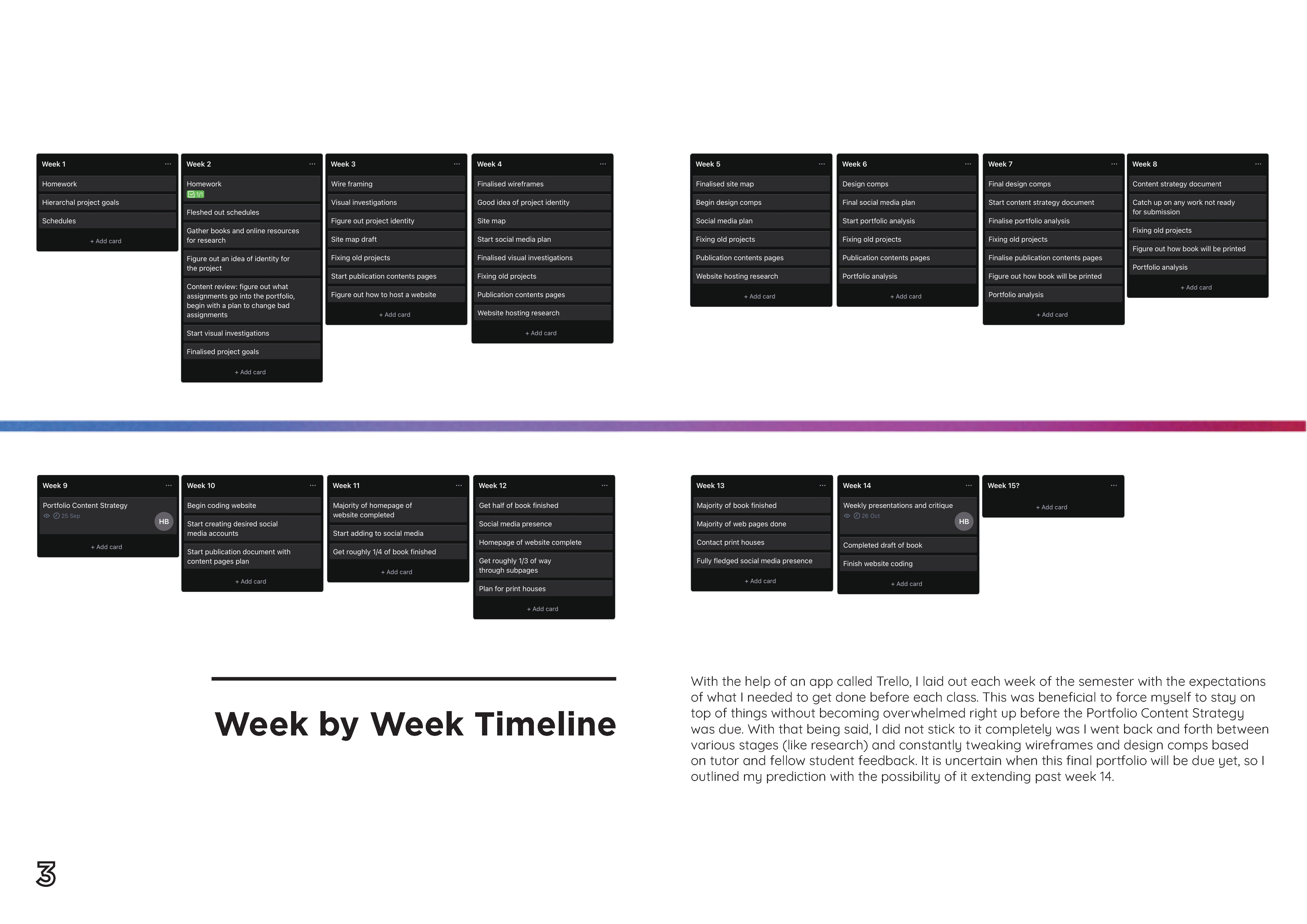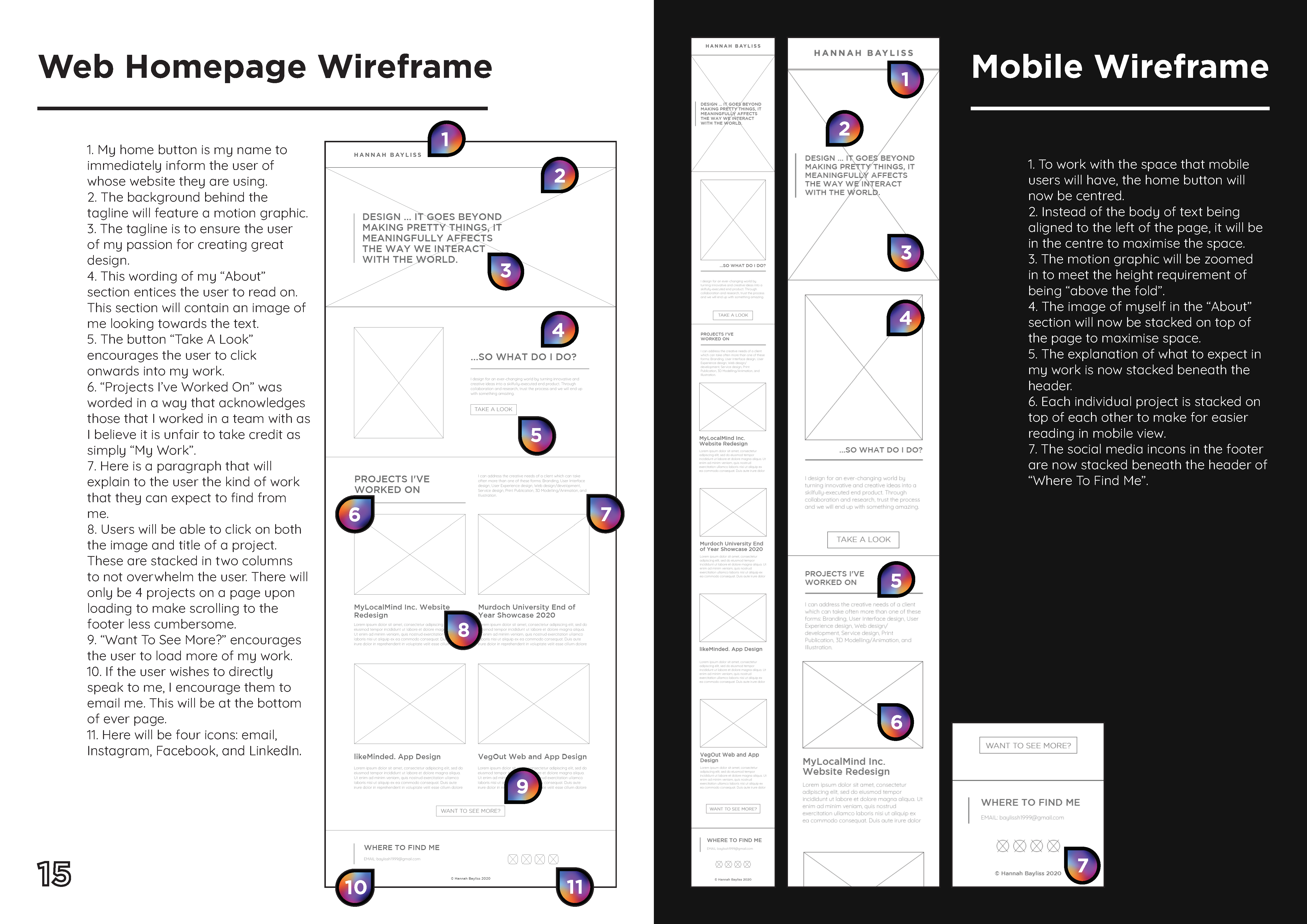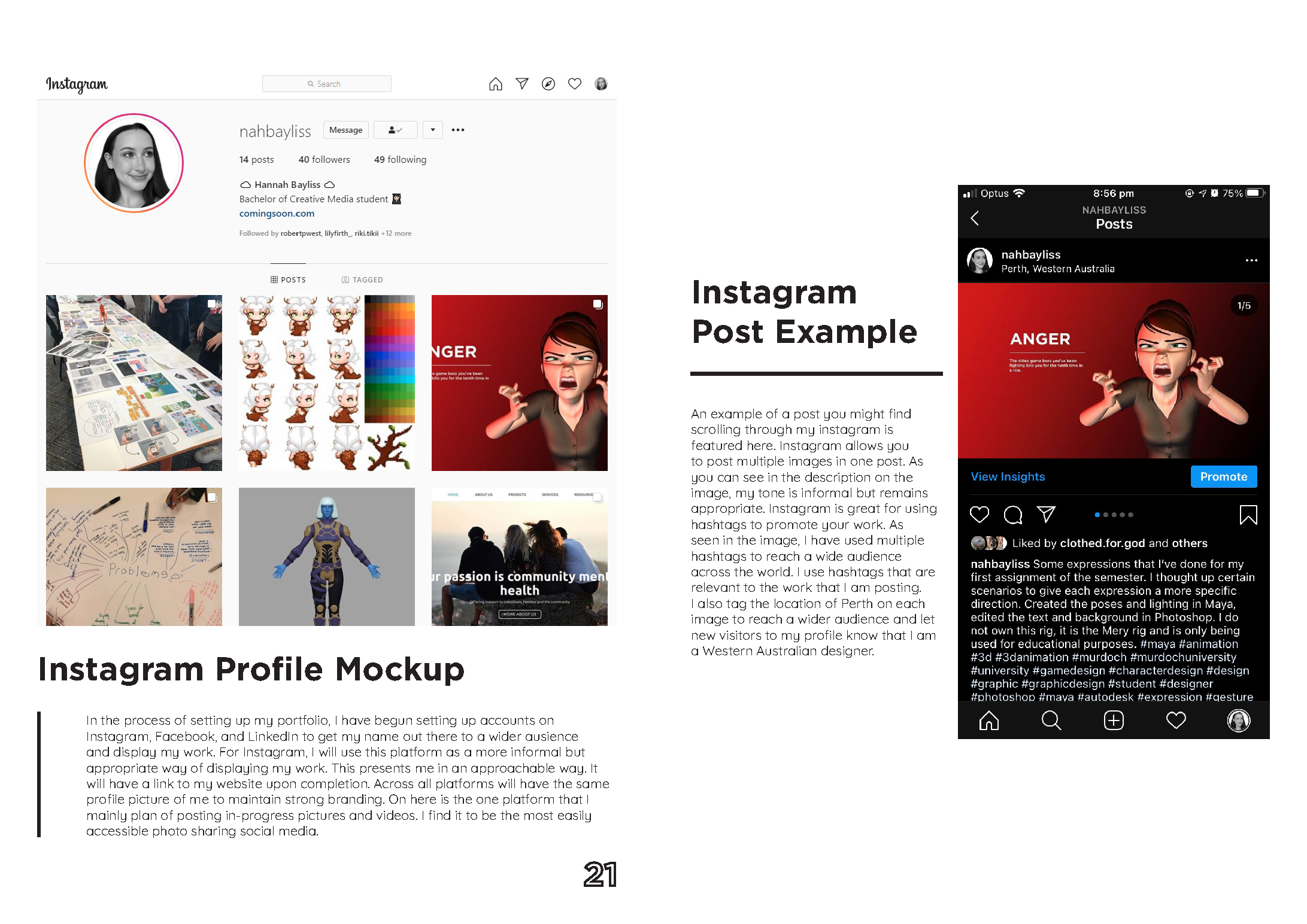
Portfolio
Project Strategy
In the planning stage of creating both this website and my printed portfolio, I put all my planning and research together into a concise document, my portfolio project strategy. This would be the outlining document for what my portfolio would become upon completion.
When referring to this document, it would allow me to just put all my time and energy into putting everything together. In this portfolio strategy, I have completed design comps of what my website should look like and what my professionally printed publication should look like. It also outlines examples of what posts on my social media pages will look like, and the tone of voice I would use to caption my posts.
Coming up with a brand for yourself is surprisingly hard after spending three years designing for others. When I got started with putting together my portfolio, I first began with some goal setting. This included short-term goals that I could accomplish by the end of the semester (such as having a professional book of my best work), and long-term goals (such as creating a portfolio that would be easy for me to continually update over time). With the use of Trello, I outlined what I should have completed by each week leading up to completion of both the project strategy and my final completed portfolio. This portfolio strategy was put together in just over two months. While I didn’t hit every requirement by the required weeks on Trello due to other units requiring more of my focus at certain times, I made up for it by catching up when my other units weren’t so busy. Also helping me stay on track was a daily schedule of when I should work on certain units, and a Gantt chart of when certain stages should be completed.


Beginning my research started with reviewing the portfolios of other professionals. I would identify what made these portfolios great, and their downfalls. Some would excel in the aesthetics of their portfolio but would lack things like usability and relevant information. Others would offer lots of explanation and images for their projects but not put much thought into how visually appealing their portfolio was. After the analysis of others’ portfolios, I started visually investigating the design direction that I would go in. I thought about the things that made me who I am. I started investigating things related to what I enjoy: I love colour, especially pink and blue, I like minimalism, I like retro-sci-fi, I enjoy unconventional design. From these things I came up with three different visual investigations.
After this was the wireframing stage. I created these wireframes of what the layout of my website layout should look like, as well as my publication. I tried to balance the visual appeal of the design with the focus of the content. With the completed wireframes came the fleshing-out of them to become design comps. I used pops of a black background to bring attention to the most important aspects of information. I also did this with pops of colour. Following that came the planning of my publication. It would be laid out in this order of pages: the front cover, an “about me”, a contents page, my projects, a glossary, and the blurb. The purpose of the glossary at the back of the book is for the reader to find a project related to a certain aspect of design (such as a service design project being listed on page 12, for example).
I have three different social medias, Facebook, Instagram, and LinkedIn. Instagram is my main form of social media, and I post there frequently about works-in-progress and completed projects. I use an informal tone of voice on Instagram and use a lot of relevant hashtags on each post to reach a wider audience. Facebook is similar. I post less frequently there, it’s used mainly to update followers on completed milestones, posts that are relevant to them (like signing up for an event), and finished projects. This has an informal tone of voice but uses less hashtags as they are not quite so useful on this platform and can be quite annoying to a follower. On LinkedIn, I am much more formal. I only post the most presentable images with appropriate captions. I will sometimes use a few hashtags that are relevant to reach a wider audience but not too many.
